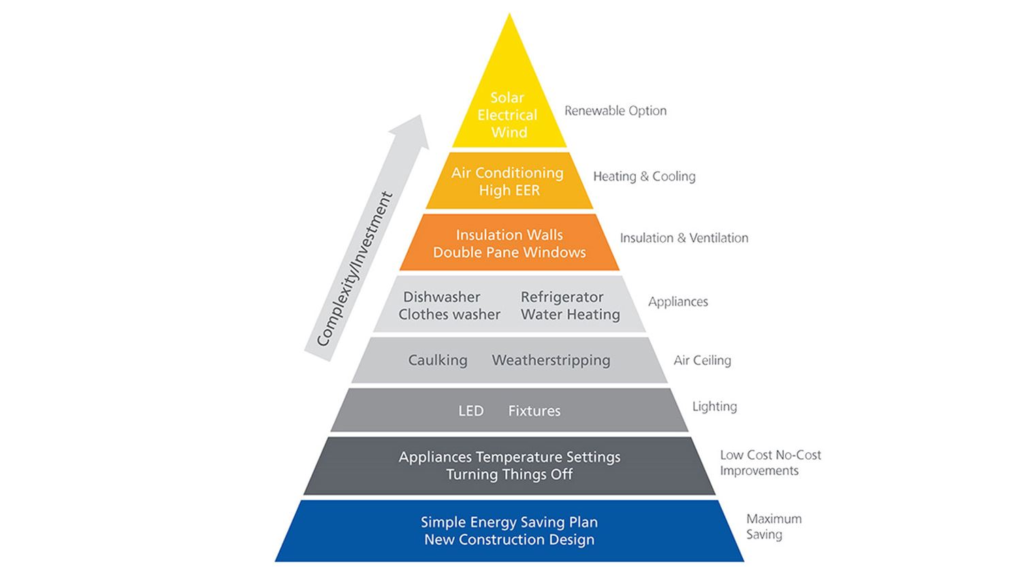Campaign focuses on essential element of energy conservation

A scarcity of energy resources, growing energy market volatility, growing concern over the security of future energy supply, and — last but not least — growing concerns over climate change and its negative impacts make the need for energy saving and energy efficiency significant.
This May sees Saudi Aramco’s annual energy conservation campaign, designed to raise awareness of energy efficiency within our communities. This campaign has been conducted since 2006, and this year, is working in alignment with facets of Saudi Arabia’s Vision 2030.
First steps
The theme of this year’s campaign is The First Step to Conserving — Understanding. Our Community Services (CS) division, who conduct the campaign, believes that ‘understanding energy utilization’ is the most essential element in energy conservation. Unless we understand ‘what to save, where to save, when to save, and how to save,’ the comprehensive energy-saving strategy cannot be realized. CS will be promoting the energy pyramid concept to explain the relationship between complexity and investment to implement energy conservation.
The Energy-Efficiency Pyramid
The Energy-Efficiency Pyramid, modeled on the commonly known food pyramid, is a guide for energy retrofit work, starting at the bottom rung.
Homeowners who are uncertain of the best way to lower their energy bills should start at the lowest level of the pyramid and work their way up. Actions near the bottom of the pyramid are much more cost-effective than actions near the top of the pyramid. At current energy prices, the actions listed on the top two layers are never cost-effective.
The rules displayed in the energy conservation pyramid are not set in stone; every house is different, and different climates dictate different strategies.
The steps on the pyramid
Home energy audit: Before beginning any energy retrofit work, a homeowner needs information, which can be achieved through a home energy audit. Why conduct an energy audit? By identifying the most important retrofit tasks for your specific house, a good audit can save a significant amount of money that might have been wasted on inappropriate work.
Low-cost measures to reduce plug loads: Turn off your appliances. This step can yield significant savings for a very small investment. To lower your electric bill:
- Turn off the lights when you leave a room
- Turn off appliances that aren’t being used
- When not in use, unplug chargers for mobile phones and similar battery-operated gadgets.
- Put televisions and other ‘instant on’ appliances on a plug strip — and remember to turn off the plug strip when the appliance isn’t in use.
Lighting: The next step is very cost-effective: make sure your house is incandescent-free. Light-emitting diode (LED) and compact fluorescent (CFL) lights are best energy-saving options.
Air sealing: Air-sealing work will usually yield a quick payback in energy savings and is best done by an experienced home-performance contractor equipped with a blower door.
Efficient appliances: If some of your major appliances — your refrigerator, clothes washer, or dishwasher — are more than 10 years old, you may want to replace them with more efficient models. Don’t be tempted to buy a bigger refrigerator; small is good. Pay close attention to the yellow Energy-Guide labels — especially the number of stars and annual kWh number — when you go appliance shopping.
Insulation improvements: Many older homes have less insulation than homes built today, but even adding insulation to a newer home can pay for itself within a few years. You need to find out the following:
- Where your home is or isn’t insulated, and where it should be
- What type of insulation you have
- The R-value and the thickness or depth (inches) of the insulation you have.
- Water heating: If you have an old, inefficient water heater, you may wish to replace it. Options include:
- A high-efficiency gas-fired or electric resistance water heater
- A heat-pump water heater
- An instantaneous gas-fired water heater
- Any of the above, supplemented by a solar water heater.
- Although a new water heater can lower your energy bills, you shouldn’t expect a fast payback on the investment.
Space-heating and cooling equipment: When inefficient heating or cooling equipment gets old enough to replace, be sure to invest in the most efficient available equipment. If you are shopping for a new air conditioner, look for high SEER (14 or higher). There’s an important reason why energy-efficiency experts recommend holding back on the purchase of new heating and cooling equipment until air sealing and insulation work is complete: envelope improvements may permit heating and cooling equipment to be downsized. If you replace your heating and cooling equipment before finishing necessary air-sealing work or insulation upgrades, you’ll waste money on oversized equipment.
Replacement windows: We’ve now reached the top of the pyramid. Further measures will probably reduce your home’s energy consumption, but they are unlikely to be cost-effective. The reason these measures are at the top of the pyramid is that few homeowners want to spend more on retrofit work than they will ever see in savings. Glazing with a low U-factor is desirable in all climates. In climates with cold winters, south-facing windows should have a high solar heat-gain coefficient (SHGC); in climates where air-conditioning bills are high, windows should have a low SHGC.
Renewable energy equipment: PV is a good investment in areas with high electricity costs. If tax credits and subsidies are considered, the investment can pay it back in a reasonable time period in many areas.





 Email: info@cyber-gear.com
Email: info@cyber-gear.com